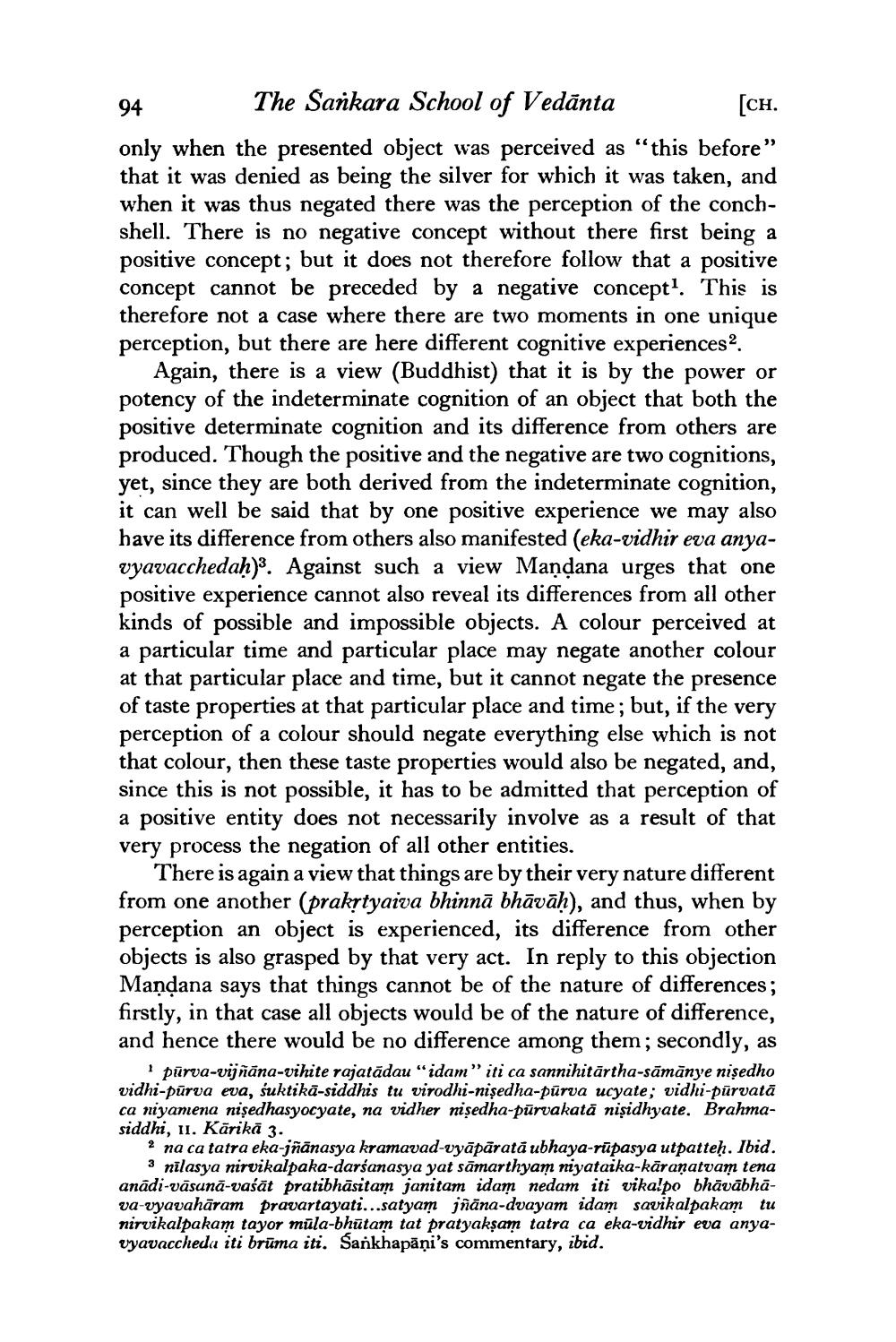________________
94 The Sankara School of Vedānta
[ch. only when the presented object was perceived as "this before" that it was denied as being the silver for which it was taken, and when it was thus negated there was the perception of the conchshell. There is no negative concept without there first being a positive concept; but it does not therefore follow that a positive concept cannot be preceded by a negative concept. This is therefore not a case where there are two moments in one unique perception, but there are here different cognitive experiences
Again, there is a view (Buddhist) that it is by the power or potency of the indeterminate cognition of an object that both the positive determinate cognition and its difference from others are produced. Though the positive and the negative are two cognitions, yet, since they are both derived from the indeterminate cognition, it can well be said that by one positive experience we may also have its difference from others also manifested (eka-vidhir eva anyavyavacchedaḥ). Against such a view Maņdana urges that one positive experience cannot also reveal its differences from all other kinds of possible and impossible objects. A colour perceived at a particular time and particular place may negate another colour at that particular place and time, but it cannot negate the presence of taste properties at that particular place and time; but, if the very perception of a colour should negate everything else which is not that colour, then these taste properties would also be negated, and, since this is not possible, it has to be admitted that perception of a positive entity does not necessarily involve as a result of that very process the negation of all other entities.
There is again a view that things are by their very nature different from one another (prakrtyaiva bhinnā bhāvāḥ), and thus, when by perception an object is experienced, its difference from other objects is also grasped by that very act. In reply to this objection Mandana says that things cannot be of the nature of differences; firstly, in that case all objects would be of the nature of difference, and hence there would be no difference among them; secondly, as
pūrva-vijñāna-vihite rajatādau “idam” iti ca sannihitārtha-sāmānye nişedho vidhi-pūrva eva, suktikā-siddhis tu virodhi-nişedha-pūrva ucyate; vidhi-pūrvatā ca niyamena nişedhasyocyate, na vidher nişedha-pūrvakată nişidhyate. Brahmasiddhi, 11. Kārikā 3.
2 na ca tatra eka-jñānasya kramavad-vyāpārată ubhaya-rūpasya utpatteh. Ibid.
3 nilasya nirvikalpaka-darśanasya yat samarthyam niyataika-kāranatvam tena anādi-vāsunā-vaśāt pratibhāsitam janitam idam nedam iti vikalpo bhāvābhāva-vyavahāram pravartayati...satyam jñāna-dvayam idam savikalpakam tu nirvikalpakam tayor mūla-bhūtam tat pratyakşam tatra ca eka-vidhir eva anyavyavaccheda iti brūma iti. Sankhapāņi's commentary, ibid.




